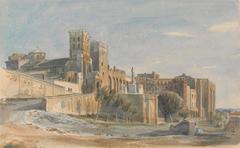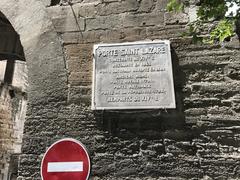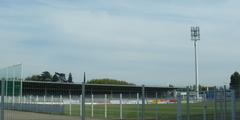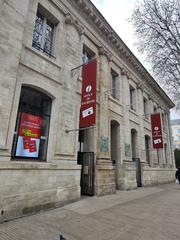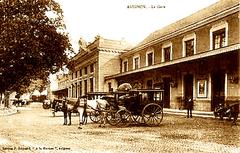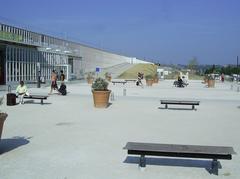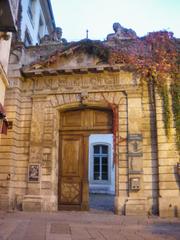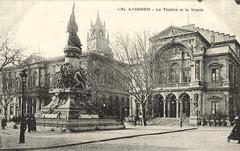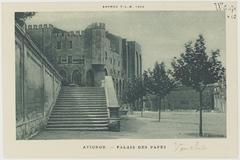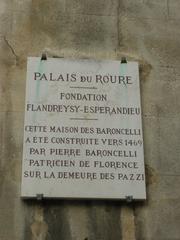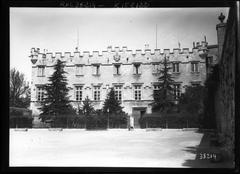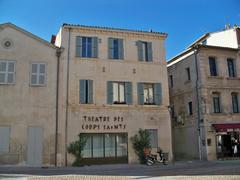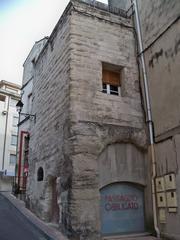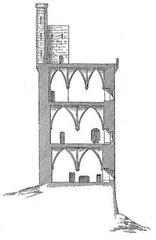Maison de la Petite Lanterne, Avignon: Visiting Hours, Tickets, and Complete Guide
Date: 14/06/2025
Introduction
In the heart of Avignon’s historic center lies the Maison de la Petite Lanterne, a lesser-known yet evocative monument that captures the city’s domestic and architectural heritage. While overshadowed by iconic landmarks like the Palais des Papes and Pont Saint-Bénézet, this residence stands as a testament to Avignon’s medieval and Renaissance urban development, offering visitors a window into the everyday lives of its former bourgeois inhabitants.
This guide provides everything you need to know to appreciate the Maison de la Petite Lanterne: its history and architecture, practical details for planning your visit, accessibility information, and suggestions for exploring nearby attractions. Whether you’re a history enthusiast, an architecture lover, or a curious traveler, let this guide enhance your discovery of Avignon’s rich tapestry (Lonely Planet, Monumentum, France-Voyage).
Table of Contents
- History and Architecture
- Visiting Information
- Visitor Experience
- Frequently Asked Questions (FAQ)
- Responsible Tourism
- Conclusion
- References
History and Architecture
Origins and Early Development
The Maison de la Petite Lanterne dates from the late 15th or early 16th century, a time when Avignon flourished both as a papal seat and as an urban hub. Its origins are intertwined with the city’s expansion following the papal residency (1309–1377), which spurred the construction of private townhouses for affluent merchants and minor nobility. The house’s name likely stems from an architectural lantern—a small turret or window—that illuminated the narrow medieval streets, serving both decorative and practical purposes (Monumentum).
Architectural Features
This residence exemplifies the transition from medieval to Renaissance domestic architecture. The limestone façade is adorned with pointed arches, mullioned windows, and finely carved stonework. Its relatively modest size, compared to the city’s grand hôtels particuliers, reflects the status of its original owners. The roof, protected since 1932, features traditional Provençal tiles, and the façade may include period elements such as wrought iron balconies and stone surrounds (Monumentum).
Over time, the interior was updated with more comfortable living spaces, decorative plasterwork, and new fireplaces, though much of the building’s original character has been preserved.
Heritage Status
The Maison de la Petite Lanterne is a protected historic monument and part of Avignon’s UNESCO World Heritage urban fabric. Its preservation is strictly managed, ensuring that restoration respects its historical integrity and that it remains a tangible link to Avignon’s past (Monumentum).
Visiting Information
Hours and Entry
Maison de la Petite Lanterne is private property and not generally open to the public. There are no regular visiting hours or ticketing options. However, visitors are welcome to admire the exterior from rue Joseph-Vernet, a street celebrated for its well-preserved historic architecture.
Special openings: During events like the European Heritage Days, the building may occasionally open its doors to the public. For updates on these events, check local tourism websites or consult the official Avignon tourist office (Avignon Tourisme).
Entry Fees: Since interior access is not available, there is no ticket or fee required to appreciate the building’s façade.
Accessibility
Viewing the Maison de la Petite Lanterne from the street is accessible to most visitors. Rue Joseph-Vernet is pedestrian-friendly, though cobblestone surfaces may pose challenges for those with mobility issues. No on-site facilities are available.
Directions and Getting There
- Location: 64 rue Joseph-Vernet, in Avignon’s historic center.
- By foot: Easily reachable from major sites like Palais des Papes and Place de l’Horloge.
- By public transport: Avignon central train station (Gare d’Avignon Centre) is a 10–15 minute walk away. Local buses and bike rentals are available.
- Parking: Limited in the old town; use nearby parking facilities and walk in (Avignon Tourisme).
Visitor Experience
What to See and Do
- Admire the façade: Take time to appreciate the intricate stonework, period windows, and elegant proportions. The building is especially photogenic in early morning or late afternoon light.
- Explore rue Joseph-Vernet: This historic street is lined with other hôtels particuliers and boutiques, offering a picturesque atmosphere.
- Combine with a walking tour: Many guided tours of Avignon’s old town include a stop at the Maison de la Petite Lanterne and provide historical context (Visite Avignon).
Nearby Attractions
- Palais des Papes: One of Europe’s grandest Gothic palaces (PlanetWare).
- Collection Lambert: Modern art museum in a historic building.
- Musée Calvet: Fine arts and archaeology (France-Voyage).
- Musée Requien: Natural history museum.
- Place de l’Horloge: The lively main square of Avignon.
Practical Tips
- Footwear: Wear comfortable shoes for cobblestone streets.
- Timing: Visit during daylight hours for the best experience and safety.
- Photography: The façade is ideal for photos; early and late in the day provide optimal lighting.
- Facilities: Nearby cafés and restaurants offer refreshments; the Avignon Tourist Office at Place de l’Horloge provides maps and assistance (Avignon Tourisme).
Frequently Asked Questions (FAQ)
Q: Can I visit inside Maison de la Petite Lanterne?
A: No, the building is private and not open to the public, except possibly during special heritage events.
Q: Are there any tickets or entry fees?
A: No, viewing the exterior is free and open to all.
Q: Is the area accessible for people with mobility challenges?
A: The street is generally accessible, though cobblestones may be uneven.
Q: What are the best nearby historical sites?
A: Palais des Papes, Collection Lambert, and Musée Calvet are all nearby.
Q: Are guided tours available?
A: Yes, many walking tours include Maison de la Petite Lanterne as part of their itinerary.
Responsible Tourism
Avignon encourages sustainable tourism. Explore the historic center by foot or by bike, support local businesses, and respect preservation efforts. The city values its heritage and asks visitors to enjoy sites quietly and courteously (Avignon Tourisme).
Conclusion
While Maison de la Petite Lanterne does not offer interior visits, its beautifully preserved façade and setting on rue Joseph-Vernet provide a unique glimpse into Avignon’s layered history. Combine your visit with nearby museums, guided tours, and cultural events to experience the depth of the city’s heritage. For the latest updates, event information, and guided tour options, consult the Avignon Tourist Office and consider using the Audiala app for audio-guided explorations.
Ready to explore more of Avignon’s hidden gems? Download the Audiala app, follow local tourism resources, and embark on your journey through Avignon’s historical heart!
References and Further Reading
- Visiting the Maison de la Petite Lanterne: Hours, Tickets, and Historical Insights in Avignon, 2025 (Lonely Planet)
- Maison dite de la Petite Lanterne in Avignon: History, Architecture & Tips, 2025 (Monumentum)
- Maison De La Petite Lanterne Visiting Hours, Tickets & Guide to Avignon Historical Sites, 2025 (Avignon Tourisme)
- Visiting Maison De La Petite Lanterne: Hours, Tickets, and Exploring Avignon Historical Sites, 2025 (Avignon Tourisme)
- Avignon Historical and Cultural Context, 2025 (France-Voyage)

